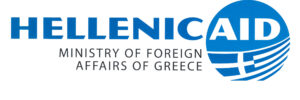The present study, conducted by the German Development Institute (DIE), analyses the donor countries’ approaches in partner country selection. The study attempts to explain donor vis-à-vis ODA allocation in order to clarify some missing points emerging from the gaps in the existing literature and it raises the question of whether there is any explicit or implicit strategy for selecting partner countries, what the patterns look like, and how they are formulated by the donors concerned. Since the motives of aid giving vary, it is difficult to identify clear guidelines for effective and efficient aid allocation.
For the analysis of partner country selection, eight members of the DAC were chosen as case studies: the European Union, France, Germany, Japan, the Netherlands, Sweden, the United Kingdom and the United States. These DAC members have an increased share of the total ODA flows by the DAC donors, worldwide and are of high importance due to their long-lasting active role in international development and their contribution in setting the standards in international principles in aid. The analysis showed that, overall, all providers of aid have a certain strategy in determining their partner countries which, however, differs from their concept of strategic orientation.
The key conclusions and suggestions of the study are summarized as follows: 1) not every donor follows a clear approach in partner country selection, 2) actual ODA flows do not always reflect the stated intentions and 3) usually, donors follow a mixture of development-oriented and strategic approaches.
Read the document here.
